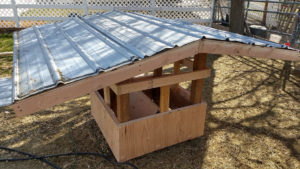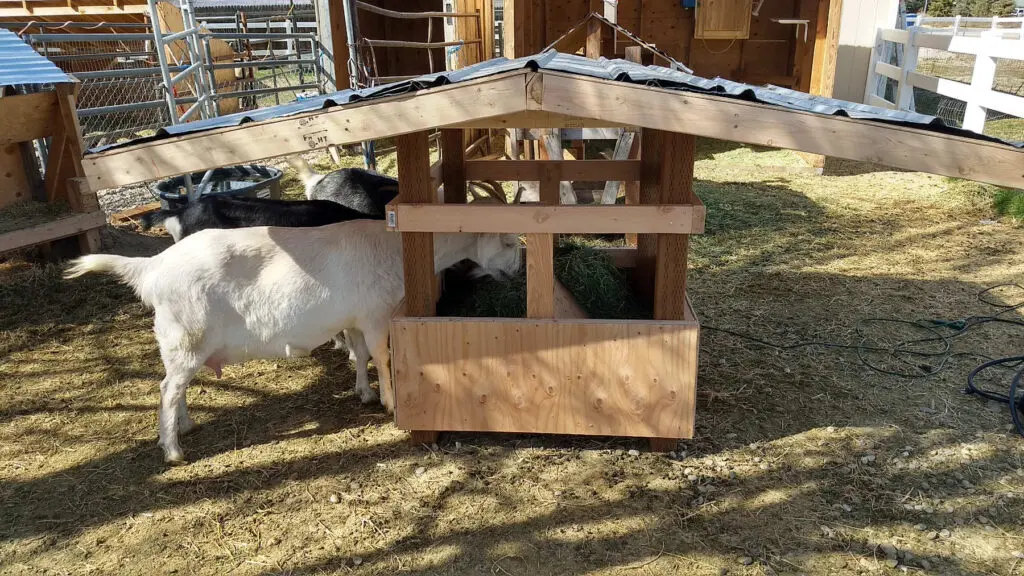--- Blog, Backyard goats, Pasture Life
Goat Feeder for Hobby Goat Owners
Goat Feeder for the Hobby Goat Owner

When it comes to building a goat feeder, it can be hard to know where to start. There are hundreds of designs for ways to feed goats out there. Everything from re-purposed laundry baskets to nets to commercial pre-fabricated feeders.
Safety:
Feeders need to be free of potential entrapment for hooves, heads, and horns. Bag feeders are notoriously dangerous for trapping goats. We strongly discourage the use of bag feeders. Some will swear they’ve had them for years without issue, but many have lost goats or had close calls. Other feeders can pose threats as well, feeders that don’t allow horned goats can be dangerous for broken horns or horn inflicted injuries. Free standing feeders need to be fixed to eliminate tipping dangers that can injure or kill goats.
Goat Feeder Application:
Not all feeders make sense for all goat owners. Large herds need larger designs. Also, the type of feed you have will influence your design. Do you use 4 band square bales or 2 band bales? Round bales or loose hay? Also, horned goats need more space and key-hole style feeders don’t work.
Protection from moisture:
Feeders need to keep feed dry. Once feed is wet it can get moldy and be dangerous or deadly or goats. Putting feeders in the barn or under roof is key.
Accessibility:
Feeders need to be accessible. Obviously goats need to be able to feed but you also need ease of access for putting out feed, ideally without being mobbed by hungry goats. Squirt bottle training will go a long ways, but an easy access feeder makes chores headache free.
Herd feeder design:
Feeding more than one goat at once is a game changer. Building feeders with multiple access points greatly facilitates chores. Not all designs are equal, in line feeders tend to be dominated by aggressive goats. However, dominant goats will let submissive goats feed across from them, we recommend feeders with corners.
Prevent soiled feed:
Goats will climb in and on anything they can and they love bedding in fresh feed. Once feed touches the ground or has the slightest scent of poop or pee, they will not eat it. Feeder designs must keep goats from entering, bedding, or soiling in the feeders. Babies are nearly impossible to keep put, but after a few months they should be kept out. Grated flooring and feed dividers are the best solution.
Limiting waste:
Most goat feeders out there are terrible at wasting feed. Many goat owners have resigned to accepting wasted feed as a fact of life. This doesn’t have to be the case! Building feeders that require goats to keep their heads in and down keeps them from taking a bite and looking around. Wasted feed is not a fact of life! The right feeder will maximize your feed, save money, and nearly eliminate waste.
The Ultimate Goat Feeder Design:
After years of development, trial and error, and lots of testing. We have discovered a tried and true feeder design for small herds of horned goats. This design is not suited for large herds but can easily feed up to 8 goats at once.
The improved roof design creates sheltered feeding and bedding space. Extended roofing not only shelters feed but keeps high traffic areas free of mud to help combat issues like hoof rot and irritation. Check out the fully detailed building plans and more of the waste minimizing features of the Marc Warnke Feeder Design.



